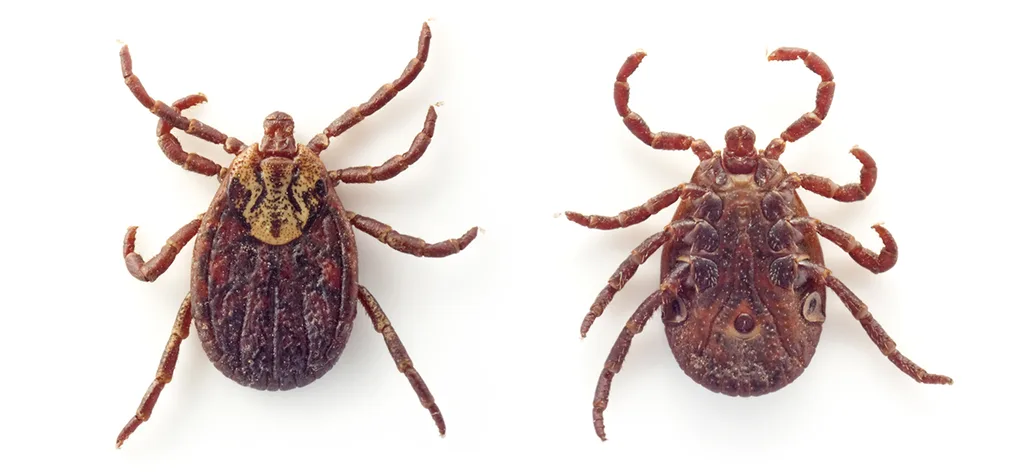A painful disease which if untreated can prove chronic and even fatal is causing a storm in the medical world with some doctors denying its existence. Professor Kerryn Phelps investigates.
Medicine is no stranger to controversy, but a debate is raging in the medical community about whether a disease even exists in Australia. This debate has polarised experts, leaving people who believe they are suffering from it, as well as the doctors who are treating it in an intolerable state of limbo. A high level advisory committee has been established by the Federal Department of
Health to investigate Borreliosis (or Lyme Disease) and was due to report this year (Note: This article was first published in the September issue of The Australian Women’s Weekly so this date refers to late 2014).
For years a debate has raged about whether Lyme Disease or a Lyme-like disease exists in Australia. The official word has been that Lyme Disease just does not happen here. Yet tell that to sufferers who are convinced they have the disease, or people who have been cured of debilitating symptoms and you will get a fierce response that it does exist and it should be treated. Then there are doctors who are convinced that they are diagnosing and successfully treating the disease.
Meanwhile, the medical board is interrogating and disciplining doctors who claim they are identifying cases and helping patients to recover.
So what is this mysterious disease? Lyme Disease (more accurately known as Borreliosis) is well recognized in the USA and Europe. It is a bacterial disease caused by an organism called Borrelia, one of a group of bacteria known as spirochaetes. Spirochaetes include the organism responsible for syphilis.

“Following a tick bite, the infection begins with a fever and a bulls-eye shaped rash.”
Following a tick bite, the infection begins with a fever and a bulls-eye shaped rash. If it is diagnosed and treated with antibiotics at this early stage it is completely curable. If it is not treated at this stage, it can spread to become a debilitating chronic disease causing neck stiffness, shooting pains from nerve damage, other brain effects, weakness, heartbeat irregularities and a loss of muscle tone in the face, known as Bell’s palsy. In extreme cases, it can cause death.
The Royal College of Pathologists of Australia made the bold move of declaring the disease does not exist in Australia because standard testing not been able to identify the bacteria in samples or in ticks here. Yet Australian laboratories only test for one type of Borrelia, the one that is commonly found in the USA.
Australians who contract the illness in Europe or Asia, or indeed even possibly here in Australia will not be tested for other variants of the disease and so the diagnosis can be missed.
People who have confirmed infection may have traveled in the past to areas of the world known to have Borrelia, raising doubt that the infection arose in Australia.
Meanwhile, practitioners working in this area tell me they have definitely identified Borrelia in people who have never traveled outside of Australia. So where does the truth lie?
Jenny Burke of Australian Biologics, a private Sydney laboratory, is convinced that there is a home-grown Australian form of Borreliosis. She told me: “We have sequenced Borellia from patients who have never left the country. We have published papers where we have found Borrelia in Australian ticks and in the bite site. We are set up to detect low level chronic infection in blood. Our tests have a lower sensitivity than a routine lab and nobody else is doing this work. ” She added: “This is a very contentious organism. There is power politics around this similar to the early days of syphilis. It is frightening. So many people are being misdiagnosed and put on immune suppressants, which just makes the infection worse. Patients are really sick, some are dying.”
Several of the doctors I contacted were happy to give information but were not happy to be named. They gave two reasons for this. The first was that they are aware that doctors treating suspected Lyme Disease are being targeted by the disciplinary panels and they want to be able to continue to help their patients. The second is that their workload is already so great that they feel they just cannot cope with any more patients.
Dr Richard Schloeffel is an exception. He has been treating patients with Borreliosis and other related infections for 19 years and he has been involved in research through the University of Sydney. He says that from his research he believes these days the majority of his patients developed the disease in Australia but many tell a harrowing tale of trying to find the right treatment.
“This is an infectious disease in epidemic proportions. Patients have been yelled at and told they have mental illness, told they have conversion reactions or, if they are parents, suspected of Munchausen’s by proxy. The evidence is staring them in the face. This is an emerging illness.”
A senior pathologist who also preferred not to be identified, told me that his view was that “there is no hard evidence of the existence of Lyme Disease in Australia. That doesn’t prove that it doesn’t exist. I am happy to be proven wrong if someone comes up with a reliable test.” He is concerned that patients are paying hundreds or even thousands of dollars for tests which are not officially recognised, and where the criteria for a positive test are “more generous than criteria for accredited laboratories in Australia, the USA and Europe”.
On the flip side of that argument though is the criticism of “standard” testing. The bacteria often fail to show up in blood tests. The bacteria are slow-growing so other bacteria in skin specimens may overwhelm the Borrelia before it can be recognised in skin biopsies. False negatives and false positives are common. If there is an endemic species of Borrelia in Australia, it has yet to be identified and so a specific test for it has not been developed. But this does not mean that the disease does not exist here.
Dr Schloeffel says “Pathology testing here is inadequate. We have to rely on overseas labs.”
Jenny Burke of Australian Biologics Laboratory is convinced that the disease exists in Australia. “There are three labs in three different countries doing different types of tests and coming up with the same conclusions. Borrelia is here.”
One of the reasons for concern amongst those in the profession who do not believe there is sufficient evidence for this disease is that once it has moved into the chronic stage, it takes large doses of multiple antibiotics over months or years to eliminate the bacteria.
The senior pathologist expressed concern that the therapies recommended by some GPs dealing with these patients are, in his words, “heroic”.
Dr Schloeffel explains: “Acute Lyme disease you treat for one month with (the antibiotic) doxycycline. I usually see people who have been sick for months or years. We have all these damaged people and they present with all sorts of symptoms like arthritis, chronic fatigue syndrome, fibromyalgia, seizures with normal EEGs. In the brain it causes a range of symptoms. I have 300 patients with Borreliosis, some have intravenous lines for intensive antibiotic treatment. The organism has the capacity to morph and move inside and outside of cells. Makes it hard to treat, it may take 2 to 5 years and that is what is controversial.
Many are getting better. It is amazing to see the transformation in patients when they are properly diagnosed and treated.”
There is no question that these people are sick, but it doesn’t necessarily mean that Lyme disease or a Lyme-like disease caused by Borrelia is the cause of their illness.
A government advisory committee (the Clinical Advisory Committee on Lyme Disease) involving Australian and international experts has been established by Chief Medical Officer Professor Chris Baggoley. They are now sifting through the evidence and a research study is underway to try to identify if this microorganism is endemic in Australia, and to provide some guidance on testing and treatment options.
According to Dr Schloeffel, “Until we get accurate and easily repeatable tests in every lab in Australia there will be under-diagnosis and we will have to rely on expensive tests here and overseas.
The committee is also looking at how we can look after these patients without specialist support. It is going to come down to well-trained GPs.”
In the meantime patients continue to suffer unless they manage to find a GP who will treat them.
SYMPTOMS OF BORRELIOSIS
Early skin lesions have an expanding ring form, often with a central clear zone.
Fever
Chills
Muscle and joint pains
Headache
Meningitis (headache and neck stiffness) may follow.
Central nervous system (brain), psychiatric and other complications may occur weeks or months after the onset of illness.
Irregular heartbeat
Arthritis may develop up to 2 years after onset.
A version of this article first appeared in the September 2014 issue of The Australian Women’s Weekly.
Video: An orphaned Tree Kangaroo raised by surrogate could be the cutest thing you’ve ever seen.





